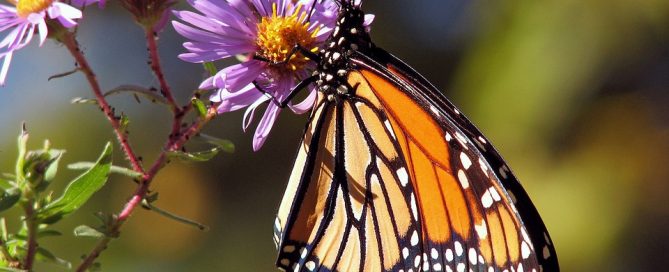Earth Day 2019: Protecting Earth’s Species
“In nature, nothing exists alone.”
— Rachel Carson, 1962
From whales to elephants, coral reefs to pollinators, this year’s Earth Day (Monday, April 22) will be focused on protecting the earth’s species. And while not everyone is quite prepared to, say, set up bee hives in their yards, there is a pollinator almost everyone does want to attract and protect — the butterfly.
“We’re frequently asked by our clients to create settings that will attract these beautiful insects,” says Dave Stockwell. And we’re not the only ones. Local nurseries have seen a large spike in purchases in recent years of pollinator-friendly plants.
Whether or not you are a gardener yourself or prefer using a landscaper (we can recommend one, should you need it (smile), creating butterfly-friendly areas in your yard is a very easy way to do your part In the Earth Day celebrations.
“Hummingbirds are another pollinator you will wish to attract,” adds Dave. “When attracting pollinators, you might also attract some bees, but if you plan your yard’s landscape design well, you can enjoy all these small visitors, but at a comfortable arm’s length. This is good for both you and the insects.”
Another consideration, of course, is avoiding toxic chemicals in your plant care.
“Earth-friendly lawn and plant care is very possible,” says Dave. “It not necessary to go for a fast kill of plant disease and pests. Besides, you might also hurt helpful organisms in the process. Not to mention that toxic chemicals in large amounts are also dangerous to pets and children. A more organic approach is a much healthier way to control them — and protect butterflies and other pollinators in the process while you’re at it.”
Let’s start with the basics.
It’s just as important that caterpillars have a safe habitat on your property as it does the full-grown insect.
Consider such herbs as Dutchman’s Pipe or Dill which not only give the larvae something to munch on but also provide protective cover.
Moving on to food.
Umbrells (or tubular-shaped plants) are a great example of a protective sanctuary for butterflies. It’s a great landing plant and its nectar is just what these insects love.
Also consider a variety of plantings throughout the seasons to create friendly habitats:
— in spring, plant Columbine, Bachelor Buttons, Bleeding Hearts, and Dianthus;
— in summer: there’s a large number of choices including Butterfly Weed, Butterfly Bush and Black Eyed Susan;
— in fall, consider Asters (see feature photo at top of page), Golden Rod and Sedums.
Special Treats for Butterflies
“Humans and birds aren’t the only species who love orange juice,” says Dave. “In addition to the liquid butterflies get from from leftover sprinkler droplets and morning dew, they love a bit of orange.”
One of our contacts at Hicks Nurseries in Westbury suggests that, “if you want to keep ants away from the sliced fruit, put it on a smaller dish and insert it into a larger one with water. Also, cut fresh slices into the fruit every day, he says.
“As we go about our daily work,” says Dave, “we’re happy to meet so many Long Islanders who are helping the environment, in their own quiet way. They, in fact, celebrate Earth Day, every day, by creating safe, beautiful habitats for butterflies and other pollinators.”





